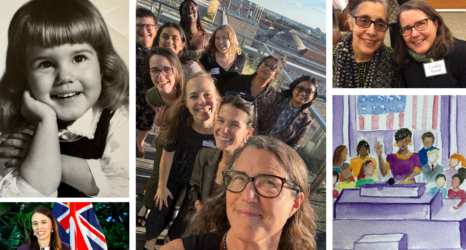People may adore romance in their comedies and chocolate in their peanut butter, but mystery in your history can be hard to love. This is a problem when it comes to March, National Women’s History Month. History, we learn at school, is about facts: names and places, dates and statistics, lists of battles and treaties, inventions, landmarks. Like science, history depends on the existence of actual material proof, documentary evidence that what someone says took place actually happened. It is about the known, not the unknown.
But there is a lot we don’t know about women’s history. Historians have long recognized that our view of history is tremendously skewed toward the people with the education and the leisure time to devote to documenting events, and the resources to preserve their documents in books and libraries: in other words, elite males. We know most of what we know about women in the past because, from time to time, individual women did things unusual enough that men took note of them.
Women’s history and Women’s History Month thus often take the form of a gallery of exceptions. Partly this is due to an understandable desire for historical women role models. Many Women’s History Month library displays, for instance, consist of biographies: Eleanor of Aquitaine, Sojourner Truth, Queen Elizabeth I, Pocahontas, Ada Lovelace.
These are fascinating women whose stories deserve to be known. But Great Women of whatever era are only a tiny fraction of all women, and their lives may not resemble other women’s lives much at all. Would reading biographies of Michelle Obama, Ann Coulter, Angela Merkel and Jennifer Lopez tell you everything you needed to know about the women of the early 21st century?
When it comes to the history of women as a group, with their own distinctive concerns, cultural dynamics, economic activities, and personal interactions, we know logically that there must be one. There cannot not be. When we look at the literature, though, there are enormous gaps. Sometimes we don’t even know what kinds of information we’re missing until we want something and it’s not there.
This is not in any way to belittle the heroic work that so many people have done on women’s history. The bookshelves in my office are lined with brilliant work on women’s history, and if I turn my head I can see crucial, pathbreaking titles by Estelle Freedman, Jo Ann Kay MacNamara, Natalie Zemon Davis and many others. I could not do what I do without their work, and I know dozens of other historians who would say the same.
It’s just that there’s still a long way to go, an awful lot of blank canvas within our frame. For instance, when in 2000 I needed to look up a historical fact about virginity, a topic with enormous bearing on the lives of women throughout recorded history, I soon realized I had stumbled upon one of those gaps in the shelves.
I would have to write the book I wanted to consult. (The book that resulted was published in 2007.) Right now, I’m writing a book on the history of heterosexuality for the same reason: I wanted to look something up and the book I needed didn’t exist. Even for historians, there’s an awful lot of mystery in our history.
These mysteries have some important things to tell us. This year, during Women’s History Month, I’m going to be blogging here about some of the particularly political mysteries of women’s history.
Why does so much female labor vanish when history books get written? Why don’t we know more, historically speaking, about women’s participation in misogyny?
To what extent can we, as the National Women’s History Project urges, “Write women back into history,” without perpetuating factual and perceptual errors? Women are half of humanity, and women’s history is half of history. We owe it to ourselves as women to take a harder look at what that means.
Learn more about women’s history here.





